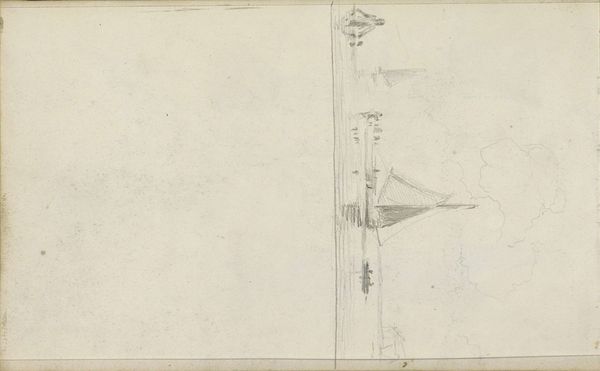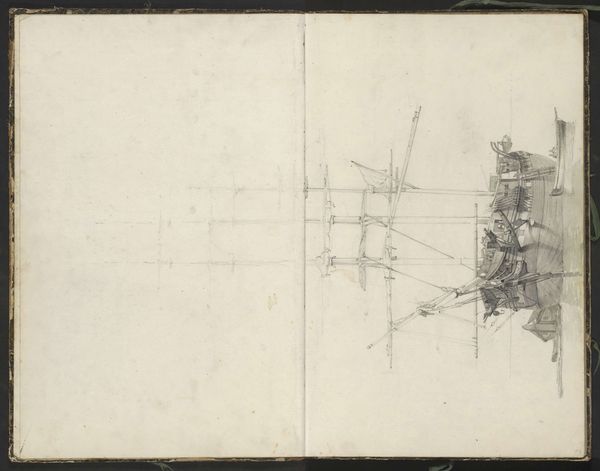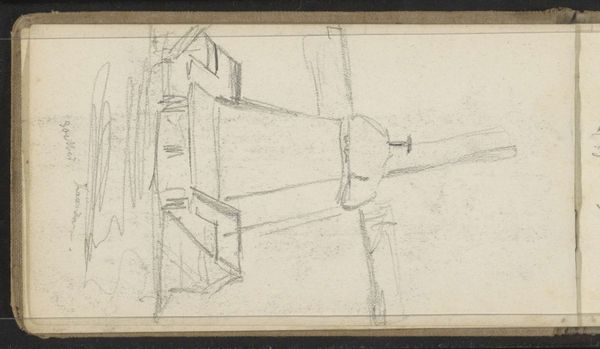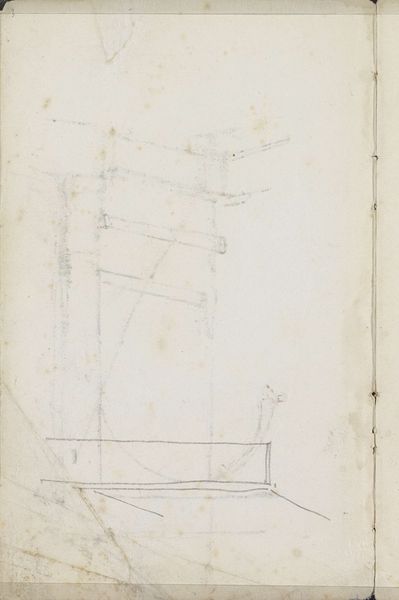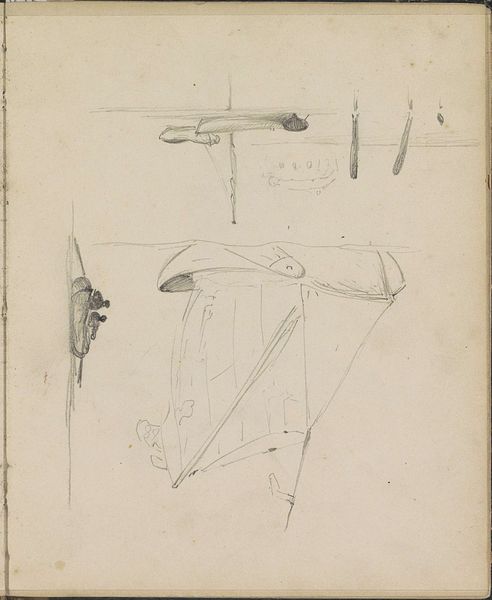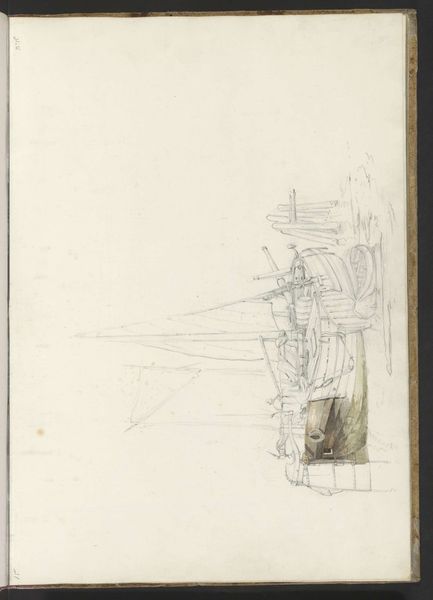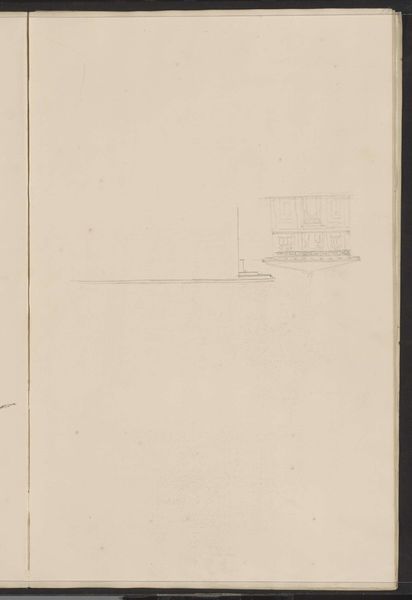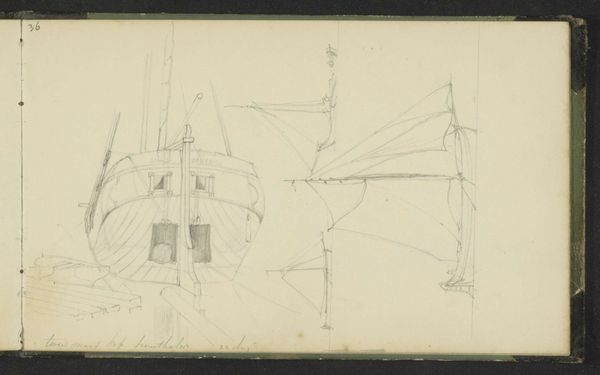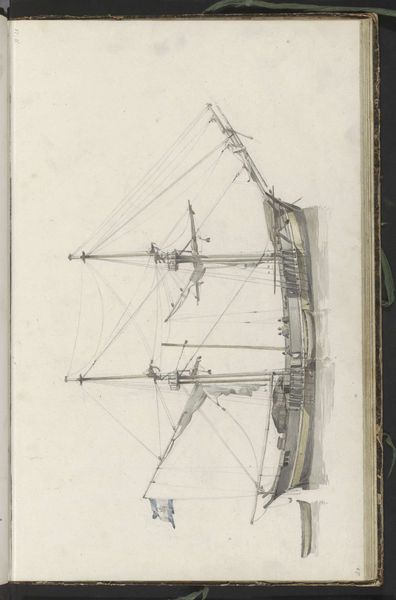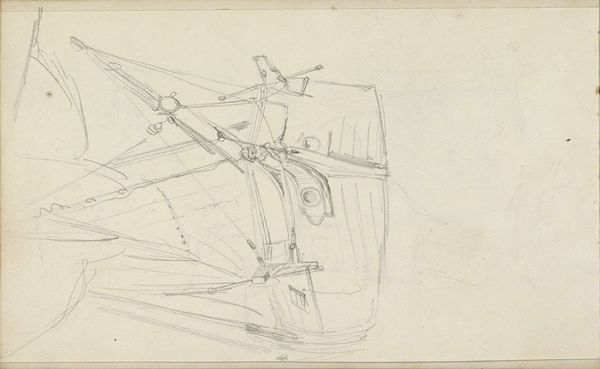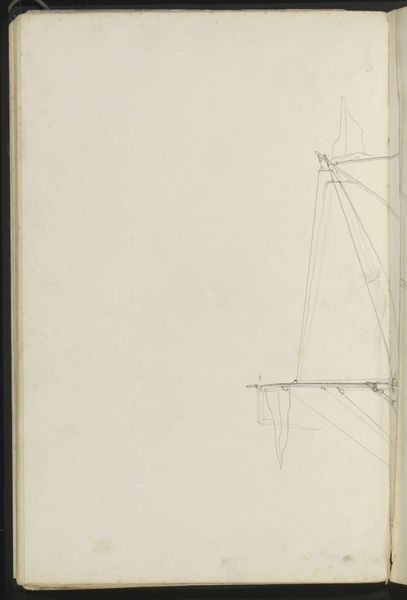
drawing, paper, pencil
#
drawing
#
landscape
#
figuration
#
paper
#
romanticism
#
pencil
#
line
Copyright: Rijks Museum: Open Domain
Curator: This is "Zeilschip op kalm water," or "Sailing Ship on Calm Water," a drawing by Sybrand Altmann, created sometime between 1840 and 1843. You can see it here at the Rijksmuseum. Editor: The first word that comes to mind is 'fragile.' Look at how delicate the lines are. It almost feels as if the paper itself is holding its breath. You can sense that even the most imperceptible shift could dismantle it entirely. Curator: I agree. The drawing captures a transient moment, which echoes a sense of idealized Romanticism where man tames the forces of nature in a symbolic dance. The pencil lines, though minimal, manage to evoke the ship's symbolic potential as a vessel navigating both inner and outer landscapes. Editor: Interesting. I’m more fixated on the labor. The very act of sketching this ship probably occurred *on* a ship, or near the docks, or after hours spent studying ships being constructed. The grain of the paper becomes crucial – it guides the pencil and imparts texture where the artist is merely suggesting the mass of sails or the complexity of the rigging. Curator: The emptiness surrounding the ship—the vastness of the untouched paper— contributes to a feeling of anticipation, or perhaps even existential uncertainty. The viewer’s presence fills in that void, and imbues the artwork with meanings we may never comprehend, which is typical of Romantic art. The drawing then reflects inner explorations of ourselves and our potential. Editor: True, but consider the accessibility and affordability of paper and pencil in 1840, which positioned sketches like this within the realm of functional design, and nautical study. This isn’t necessarily an 'art for art's sake' situation. These sketches might have directly informed ship construction techniques and perhaps navigation tools, reflecting their cultural and economical usage. Curator: It shows how an ordinary item in skilled hands reveals the extraordinary. The act of choosing what to depict reveals its symbolic potential. It offers glimpses into societal values of that era as we can explore them with an open mind. Editor: Indeed. It shows the intertwined relationship between artistry, material conditions and labor during Altmann’s time. Curator: That is a helpful insight. Thank you. Editor: As is yours. Thank you, as well.
Comments
No comments
Be the first to comment and join the conversation on the ultimate creative platform.
